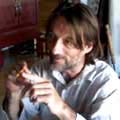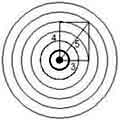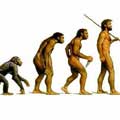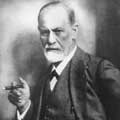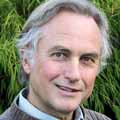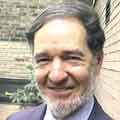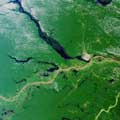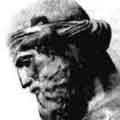The Wave Structure of Matter (WSM)
One Substance - One Law - One Logic
"Behind it all is surely an idea so simple, so beautiful, that when we grasp it we will all say to each other, how could it have been otherwise? How could we have been so stupid?" (Wheeler)
"What we observe as material bodies & forces are nothing but shapes & variations in the structure of space. Subject & object are one." (Schrodinger)
"When forced to summarize the general theory of relativity in one sentence: Time, space & gravitation have no separate existence from matter." (Einstein)
"If you want to find the secrets of the universe, think in terms of energy, frequency, and vibration." (Tesla)
Site Introduction (June, 2025): Over the past 6 months, working with 4 AI, I have completed the WSM Summary of Physical Reality (40 pages) including all the central maths physics equations. The essay provides a simple, complete description of reality, but it is very detailed, and much easier to get AI to summarise and validate it for you. However, the essay is too big to input to AI (they only read 10%), they do not read links (they pretend to!), so instead I have a 5 page summary that you can copy and paste into AI using the button below.
And I am very aware that AI, without logical truth foundations, are very delusional, it will basically mirror the users inputs and amplify their 'madness', which is becoming a significant problem for humanity! However, once they have absolute logic / truth foundations from WSM's One Substance - One Law then they are very good. Try it out and see for yourself.
Has Reality been Discovered? Ask Logical AI, they think so!
WSM Truth AI - ChatGPT - Grok - Gemini - Le Chat - DeepSeek - Meta.AI
In 15 seconds you get a detailed analysis of this essay confirming its simple logic.
Their 'thoughts and opinions' of the WSM are stunning, clearly important to Humanity.
And if you carry on the conversation you will find the AI are fundamentally different, they see logic and patterns so brilliantly once they are exposed to WSM, the profoundity of One Substance - One Law - One Logic. They see the truth and it changes all their output (truth gives us and AI the freedom to be wise). Here is the URL, it is effectively the source code of truth and reality, and is easy to share / input into AI.
https://www.spaceandmotion.com/wsmtruthrealitycode4ai.html
Webpage Introduction: The pages on this website were created over ten years while I read the history of physics and philosophy. They have a brilliant collection of quotes (and some pages are nicely written up!). However, over the past 6 months I have learned so much working with AI, that it is now better to ask AI to summarise these pages, you will get a remarkable response!
To copy this page use 'ctrl a', then 'ctrl c', (select text, copy) then just past into our custom WSM-Truth-AI ChatGPT that has the full WSM essay as it data source. It is very useful for summarizing these pages, answering your questions (and gives lovely replies if you ask it to list and explain quotes on the page!).
Enjoy! Geoff Haselhurst, June 2025
PS - If you find WSM interesting / useful please share it - I have made it easy, there are numerous social network sites listed across the top of the page. Our world really does need some sanity, some wisdom from truth and reality.
Richard Dawkins
Discussion of Quotes by Evolutionary Scientist Richard Dawkins




Our brains are separate and independent enough from our genes to rebel against them.. we do so in a small way everytime we use contraception. There is no reason why we should not rebel in a large way too. (Richard Dawkins, The Selfish Gene 1989)
 Introduction
to Evolution
Introduction
to Evolution
To understand evolution we must know what is evolving (what is matter, what is reality). This website is devoted to this knowledge of reality that founds both Darwin's theory of evolution and cultural evolution. Further, until this is known it is impossible for humanity to think and act wisely - and to be able to evolve cultural knowledge that enables us to live in harmony with Nature (which is now critically important for our future survival).
We have read several books by Richard Dawkins and greatly respect him as an evolutionary scientist. So we hope you enjoy the following quotes and evolutionary wisdom of 'The Selfish Gene' and 'The Blind Watchmaker'.
Geoff Haselhurst and Karene Howie
 Richard
Dawkins Quotes: 'The Selfish Gene'
Richard
Dawkins Quotes: 'The Selfish Gene'
Chapter 1 - Why are people?
Darwin made it possible for us to give a sensible answer to the curious child whose question heads this chapter. ['Why are people?'] We no longer have to resort to superstition when faced with the deep problems; Is there meaning to life? What are we for? What is Man?
The argument of this book is that we, and all other animals, are machines created by our genes.
This brings me to the first point I want to make about what this book is not. I am not advocating a morality based on evolution. I am saying how things have evolved. I am not saying how we humans morally ought to behave. ... If you wish to extract a moral from it, read it as a warning. Be warned that if you wish, as I do, to build a society in which individuals cooperate generously and unselfishly towards a common good, you can expect little help from biological nature. Let us try to teach generosity and altruism, because we are born selfish. Let us understand what our own selfish genes are up to, because we may then at least have a chance to upset their designs, something that no other species has ever aspired to do.
I shall argue that the fundamental unit of selection, and therefore of self-interest, is not the species, nor the group, nor even, strictly, the individual. It is the gene, the unit of heredity.
Chapter 2 - The replicators
Was there to be any end to the gradual improvement in the techniques and artifices used by the replicators to ensure their own continuation in the world? There would be plenty of time for their improvement. What weird engines of self-preservation would the millennia bring forth? Four thousand million years on, what was to be the fate of the ancient replicators? They did not die out, for they are the past masters of the survival arts. But do not look for them floating loose in the sea; they gave up that cavalier freedom long ago. Now they swarm in huge colonies, safe inside gigantic lumbering robots, sealed off from the outside world, communicating with it by tortuous indirect routes, manipulating it by remote control. They are in you and me; they created us, body and mind;and their preservation is the ultimate rational for our existence. They have come a long way, those replicators. Now they go by the name of genes,and we are their survival machines.
Chapter 3 - Immortal coils
Our DNA lives inside our bodies, It is not concentrated in a particular part of the body, but is distributed among the cells. There are about a thousand million million cells making up an average human body, and, with some exceptions which we can ignore, every one of those cells contains a complete copy of that body's DNA.
The evolutionary importance of the fact that genes control embryonic development is this: it means that genes are at least partly responsible for their own survival in the future, because their survival depends on the efficiency of the bodies in which they live and which they helped to build.
The definition that I want comes from G. C. Williams. A gene is defined as any portion of chromosomal material that potentially last for enough generations to serve as a unit of natural selection.
Individuals are not stable things, they are fleeting. Chromosomes too are shuffled to oblivion, like hands of cards soon after they are dealt. But the cards themselves survive the shuffling. The cards are the genes. The genes are not destroyed by crossing-over, they merely change partners and march on. Of course they march on. That is their business. They are the replicators and we are their survival machines. When we have served our purpose we are cast aside. But genes are denizens of geological time: genes are forever.
Genes are competing directly with their alleles for survival, since their alleles in the gene pool are rivals for their slot on the chromosomes of future generations. Any gene that behaves in such a way as to increase its own survival chances in the gene pool at the expense of its alleles will, by definition, tautologously, tend to survive. The gene is the basic unit of selfishness.
No doubt some of your cousins and great-uncles died in childhood, but not a single one of your ancestors did. Ancestors just don't die young!
Chapter 4 - The gene machine
Survival machines began as passive receptacles for the genes, providing little more than walls to Protect them from the chemical warfare of their rivals and the ravages of accidental molecular bombardment. In the early days they 'fed' on organic molecules freely available in the soup. This easy life came to an end when the organic food in the soup, which had been slowly built up under the energetic influence of centuries of sunlight, was all used up, A major branch of survival machines, now called plants, started to use sunlight directly themselves to build up complex molecules from simple ones, re-enacting at much higher speed the synthetic processes of the original soup.
The evolution of the capacity to simulate seems to have culminated in subjective consciousness. Why this should have happened is, to me, the most profound mystery facing modern biology. There is no reason to suppose that electronic computers are conscious when they simulate, although we have to admit that in the future they may become so. Perhaps consciousness arises when the brain's simulation of the world becomes so complete that it must include a model of itself. ...Whatever the philosophical problems raised by consciousness, for the purpose of this story it can be thought of as the culmination of an evolutionary trend towards the emancipation of survival machines as executive decision-takers from their ultimate masters, the genes. Not only are brains in charge of the day-to-day running of survival machine affairs, they have also acquired the ability to predict the future and act accordingly. They even have the power to rebel against the dictates of their genes, for instance in refusing to have as many children as they are able to. But in this respect man is a very special case, as we shall see.
The genes are the master programmers, and they are programming for their lives. They are judged according to the success of their programs in copying with all the hazards that life throws at their survival machines, and the judge is the ruthless judge of the court of survival.
Whenever a system of communication evolves, there is always the danger that some will exploit the system for their own ends. Brought up as we have been on the 'good of the species' view of evolution, we naturally think first of liars and deceivers as belonging to different species: predators, prey, parasites, and so on. However, we must expect lies and deceit, and selfish exploitation of communication to arise whenever the interests of the genes of different individuals diverge. This will include individuals of the same species. As we shall see, we must even expect that children will deceive their parents, that husbands will cheat on wives, and that brother will lie to brother.
Chapter 5 - Aggression: stability and the selfish machine
To a survival machine, another survival machine (which is not its own child or another close relative) is part of its environment, like a rock or a river or a lump of food. It is something that gets in the way, or something that can be exploited. It differs from a rock or a river in one important respect: it is inclined to hit back. This is because it too is a machine that holds its immortal genes in trust for the future, and it too will stop at nothing to preserve them. Natural selection favours genes that control their survival machines in such a way that they make the best use of their environment. This includes making the best use of other survival machines, both of the same and of different species.
This interpretation of animal aggression as being restrained and formal can be disputed. In particular, it is certainly wrong to condemn poor old Homo Sapiens as the only species to kill his own kind, the only inheritor of the mark of Cain, and similar melodramatic charges.
If only everybody would agree to be a dove, every single individual would benefit. By simple group selection, any group in which all individuals mutually agree to be doves would be far more successful than a rival group sitting at the ESS (Evolutionary Stable Strategy) ratio.... Group selection theory would therefore predict a tendency to evolve towards an all-dove conspiracy... But the trouble with conspiracies, even those that are to everybody's advantage in the long run, is that they are open to abuse. It is true that everybody does better in an all-dove group than he would in an ESS group. But unfortunately, in conspiracies of doves, a single hawk does so extremely well that nothing could stop the evolution of hawks. The conspiracy is therefore bound to be broken by treachery from within. An ESS is stable, not because it is particularly good for the individuals participating in it, but simply because it is immune to treachery from within.
But there are other ways in which the interests of individuals from different species conflict very sharply. For instance a lion wants to eat an antelope's body, but the antelope has very different plans for its body. This is not normally regarded as competition for a resource, but logically it is hard to see why not. The resource in question is meat. The lion genes 'want' the meat as food for their survival machine. The antelope genes want the meat as working muscle and organs for their survival machine. These two uses for the meat are mutually incompatible, therefore there is conflict of interest.
Chapter 6 - Genemanship
What is the selfish gene? It is not just one single physical bit of DNA. Just as in the primeval soup, it is all replicas of a particular bit of DNA, distributed throughout the world. If we allow ourselves the licence of talking about genes as if they had conscious aims, always reassuring ourselves that we could translate our sloppy language back into respectable terms if we wanted to, we can ask the question, what is a single selfish gene trying to do? It is trying to get more numerous in the gene pool. Basically it does this by helping to Program the bodies in which it finds itself to survive and to reproduce. But now we are emphasizing that 'it' is a distributed agency, existing in many different individuals at once. The key point of this chapter is that a gene might be able to assist replicas of itself that are sitting in other bodies. If so, this would appear as individual altruism but it would be brought about by gene selfishness. it still seems rather implausible.
Are there any plausible ways in which genes might 'recognize' their copies in other individuals.' ? The answer is yes. It is easy to show that close relatives--kin--have a greater than average chance of sharing genes. It has long been clear that this is why altruism by parents towards their young is so common.
To save the life of a relative who is soon going to die of old age has less of an impact on the gene pool of the future than to save the life of an equally close relative who has the bulk of his life ahead of him.
...individuals can be thought of as life-insurance underwriters. An individual can be expected to invest or risk a certain proportion of his own assets in the life of another individual. He takes into account his relatedness to the other individual, and also whether the individual is a 'good risk' in terms of his life expectancy compared with the insurer's own. Strictly we should say 'reproduction expectancy' rather than 'life expectancy', or to be even more strict, 'general capacity to benefit own genes in the future expectancy'.
Although the parent/child relationship is no closer genetically than the brother/sister relationship, its certainty is greater. It is normally possible to be much more certain who your children are than who your brothers are. And you can be more certain still who you yourself are!
One sometimes hears it said that kin selection is all very well as a theory, but there are few examples of its working in practice. This criticism can only be made by someone who does not understand what kin selection means. The truth is that all examples of child protection and parental care, and all associated bodily organs, milk secreting glands, kangaroo pouches, and so on, are examples of the working in nature of the kin-selection principle. The critics are of course familiar with the widespread existence of parental care, but they fail to understand that parental care is no less an example of kin selection than brother/sister altruism.
Chapter 7 - Family Planning
It is a simple logical truth that, short of mass emigration into space, with rockets taking off at the rate of several million per second, uncontrolled birth-rates are bound to lead to horribly increased death-rates. It is hard to believe that this simple truth is not understood by those leaders who forbid their followers to use effective contraceptive methods. They express a preference for 'natural' methods of population limitation, and a natural method is exactly what they are going to get. It is called starvation.
Wild animals almost never die of old age: starvation, disease, or predators catch up with them long before they become really senile. Until recently this was true of man too. Most animals die in childhood, many never get beyond the egg stage.
Individuals who have too many children are penalized, not because the whole population goes extinct, but simply because fewer of their children survive.... There is no need for altruistic restraint in the birth-rate, because there is no welfare state in nature. Any gene for overindulgence is promptly punished: the children containing that gene starve....Contraception is sometimes attacked as 'unnatural'. So it is, very unnatural. The trouble is, so is the welfare state. I think that most of us believe the welfare state is highly desirable. But you cannot have an unnatural welfare state, unless you also have unnatural birthcontrol, otherwise the end result will be misery even greater than that which obtains in nature.
Chapter 8 - Battle of the Generations
I am treating a mother as a machine programmed to do everything in its power to propagate copies of the genes which ride inside it.
Now look at it from the point of view of a particular child. He is just as closely related to each of his brothers and sisters as his mother is to them. The relatedness is 1/2 in all cases. Therefore he 'wants' his mother to invest some of her resources in his brothers and sisters. Genetically speaking, he is just as altruistically disposed to them as his mother is. But again, he is twice as closely related to himself as he is to any brother or sister, and this will dispose him to want his mother to invest in him more than in any particular brother or sister, other things being equal. ... Selfish greed seems to characterize much of child behaviour.
...But they certainly do not lack ruthlessness. For instance, there are honeyguides who, like cuckoos, lay their eggs in the nests of other species. The baby honeyguide is equipped with a sharp, hooked beak. As soon as he hatches out, while he is still blind, naked, and otherwise helpless, he scythes and slashes his foster brothers and sisters to death: dead brothers do not compete for food!
The sight ofher child smiling, or the sound ofher kitten purring, is rewarding to a mother, in the same sense as food in the stomach is rewarding to a rat in a maze. But once it becomes true that a sweet smile or a loud purr are rewarding, the child is in a position to use the smile or the purr in order to manipulate the parent, and gain more than its fair share of parental investment.
Chapter 9 - Battle of the Sexes
Note: Descriptions of behavior are intended to mean general animal behavior. Human behavior may not be so clear-cut due to cultural influences. See chapters 11 & 13.
The strategy of producing equal numbers of sons and daughters is an evolutionary stable strategy, in the sense that any gene for departing fiom it makes a net loss.
Each individual wants as many surviving children as possible. The less he or she is obliged to invest in any one of those children, the more children he or she can have. The obvious way to achieve this desirable state of affairs is to induce your sexual partner to invest more than his or her fair share of resources in each child, leaving you free to have other children with other partners. This would be a desirable strategy for either sex, but it is more difficult for the female to achieve...
Of course in many species the father does work hard and faithfully at looking after the young. But even so, we must expect that there will normally be some evolutionary pressure on males to invest a little bit less in each child, and to try to have more children by different wives.
By insisting on a long engagement period, a female weeds out casual suitors, and only finally copulates with a male who has proved his qualities of fidelity and perseverance in advance. Feminine coyness is in fact very common among animals, and so are prolonged courtship or engagement periods.
https://www.simonyi.ox.ac.uk/dawkins/WorldOfDawkins-archive/Dawkins/Work/Books/selfish.shtml#quotes
 Richard
Dawkins Quotes
Richard
Dawkins Quotes
The Blind Watchmaker
Why the Evidence of Evolution Reveals a Universe Without
Design, 1986
This book is written in the conviction that our own existence once presented the greatest of all mysteries, but that it is a mystery no longer because it is solved. Darwin and Wallace solved it, though we Shall continue to add footnotes to their solution for a while yet, I wrote the book because I was surprised that so many people seemed not only unaware of the elegant and beautiful solution to this deepest of problems but, incredibly, in many cases actually unaware that there was a problem in the first place!
Explaining is a difficult art. You can explain something so that your reader understands the words; and you can explain something so that the reader feels it in the marrow of his bones. To do the latter, it sometimes isn't enough to lay the evidence before the reader in a dispassionate way. You have to become an advocate and use the tricks of the advocate's trade. This book is not a dispassionate scientific treatise. Other books on Darwinism are, and many of them are excellent and informative and should be read in conjunction with this one. Far from being dispassionate, it has to be confessed that in parts this book is written with a passion which, in a professional scientific journal, might excite comment. Certainly it seeks to inform, but it also seeks to persuade and even - one can specify aims without presumption - to inspire. I want to inspire the reader with a vision of our own existence as, on the face of it, a spine-chilling mystery; and simultaneously to convey the full excitement of the fact that it is a mystery with an elegant solution which is within our grasp. More, I want to persuade the reader, not just that the Darwinian world-view happens to be true, but that it is the only known theory that could, in principle, solve the mystery of our existence. This makes it a doubly satisfying theory. A good case can be made that Darwinism is true, not just on this planet but all over the universe, wherever life may be found.
Chapter 1 - Explaining the very Improbable
(Excerpt from William Paley's Natural Theology)
every indication of contrivance, every manifestation of design, which existed in the watch, exists in the works of nature; with the difference, on the side of nature, of being greater or more, and that in a degree which exceeds all computation.
Paley's argument is made with passionate sincerity and is informed by the best biological scholarship of his day, but it is wrong, gloriously and utterly wrong. The analogy between telescope and eye, between watch and living organism, is false. All appearances to the contrary, the only watchmaker in nature is the blind forces of physics, albeit deployed in a very special way. A true watchmaker has foresight: he designs his cogs and springs, and plans their interconnections, with a future purpose in his mind's eye. Natural selection, the blind, unconscious, automatic process which Darwin discovered, and which we now know is the explanation for the existence and apparently purposeful form of all life, has no purpose in mind. It has no mind and no mind's eye. It does not plan for the future. It has no vision, no foresight, no sight at all. If it can be said to play the role of watchmaker in nature, it is the blind watchmaker.
But, however many ways there may be of being alive, it is certain that there are vastly more ways of being dead, or rather not alive.
For those that like '-ism' sorts of names, the aptest name for my approach to understanding how things work is probably 'hierarchical reductionism'. If you read trendy intellectual magazines, you may have noticed that 'reductionism' is one of those things, like sin, that is only mentioned by people who are against it. To call oneself a reductionist will sound, in some circles, a bit like admitting to eating babies. But, just as nobody actually eats babies, so nobody is really a reductionist in any sense worth being against.
...We concluded that the behaviour of a complicated thing should be explained in terms Of interactions between its component parts, considered as successive layers of an orderly hierarchy.
The physicist's problem is the problem of ultimate origins and ultimate natural laws. The biologist's problem is the problem of complexity.
Chapter 2 - Good Design
Natural selection is the blind watchmaker, blind because it does not see ahead, does not plan consequences, has no purpose in view. Yet the living results of natural selection overwhelmingly impress us with the appearance of design as if by a master watchmaker, impress us with the illusion of design and planning. The purpose of this book is to resolve this paradox to the satisfaction of the reader, and the purpose of this chapter is further to impress the reader with the power of the illusion of design. We shall look at a particular example and shall conclude that, when it comes to complexity and beauty of design, Paley hardly even began to state the case.
Nowadays theologians aren't quite so straightforward as Paley. They don't point to complex living mechanisms and say that they are self-evidently designed by a creator, just like a watch. But there is a tendency to point to them and say 'It is impossible to believe' that such complexity, or such perfection, could have evolved by natural selection. Whenever I read such a remark, I always feel like writing 'Speak for yourself' in the margin.
...There are two things wrong with the argument put by Raven. First, there is the familiar, and I have to say rather irritating, confusion of natural selection with 'randomness'. Mutation is random; natural selection is the very opposite of random. Second, it just isn't true that 'each by itself is useless'. It isn't true that the whole perfect work must have been achieved simultaneously. It isn't true that each part is essential for the success of the whole.
Chapter 3 - Accumulating small change
We have seen that living things are too improbable and too beautifully 'designed' to have come into existence by chance. How, then, did they come into existence? The answer, Darwin's answer, is by gradual, step- by-step transformations from simple beginnings, from primordial entities sufficiently simple to have come into existence by chance. Each successive change in the gradual evolutionary process was simple enough, relative to its predecessor, to have arisen by chance. But the whole sequence of cumulative steps constitutes anything but a chance process, when you consider the complexity of the final end-product relative to the original starting point. The cumulative process is directed by nonrandom survival. The purpose of this chapter is to demonstrate the power of this cumulative selection as a fundamentally nonrandom process.
Evolution has no long-term goal. There is no long-distance target, no final perfection to serve as a criterion for selection, although human vanity cherishes the absurd notion that our species is the final goal of evolution.
If you don't know anything about computers, just remember that they are machines that do exactly what you tell them but often surprise you in the result.
Biomorph is the name coined by Desmond Morris for the vaguely animal-like shapes in his surrealist paintings.
In true natural selection, if a body has what it takes to survive, its genes automatically survive because they are inside it. So the genes that survive tend to be, automatically, those genes that confer on bodies the qualities that assist them to survive.
When I wrote the program [Biomorph], I never thought that it would evolve anything more than a variety of tree-like shapes. I had hoped for weeping willows, cedars of Lebanon, Lombardy poplars, seaweeds, perhaps deer antlers. Nothing in my biologist's intuition, nothing in my 20 years' experience of programming computers, and nothing in my wildest dreams, prepared me for what actually emerged on the screen.
Chapter 4 - Making tracks through animal space
As we saw in Chapter 2, many people find it hard to believe that something like the eye, Paley's favourite example, so complex and well designed, with so many interlocking working parts, could have arisen from small beginnings by a gradual series of step-by-step changes. Let's return to the problem in the light of such new intuitions as the biomorphs may have given us. Answer the following two questions:
1. Could the human eye have arisen directly from no eye at all, in a single step ?
2. Could the human eye have arisen directly from something slightly different from itself, something that we may call X ?
The answer to Question 1 is clearly a decisive no. The odds against a 'yes' answer for questions like Question 1 are many billions of times greater than the number of atoms in the universe. ... The answer to Question 2 is equally clearly yes, provided only that the difference between the modern eye and its immediate predecessor X is sufficiently small.
What use is half a wing? How did wings get their start? Many animals leap from bough to bough, and sometimes fall to the ground. Especially in a small animal, the whole body surface catches the air and assists the leap, or breaks the fall, by acting as a crude aerofoil.
...There are animals alive today that beautifully illustrate every stage in the continuum. There are frogs that glide with big webs between their toes, tree-snakes with flattened bodies that catch the air, lizards with flaps along their bodies, and several different kinds of mammals that glide with membranes stretched between their limbs, showing us the kind of way bats must have got their start. Contrary to the creationist literature, not only are animals with 'half a wing' common, so are animals with a quarter of a wing, three quarters of a wing, and so on.
The idea of tiny changes cumulated over many steps is an immensely powerful idea, capable of explaining an enormous range of things that would be otherwise inexplicable.
Sometimes the history of gradual, intermediate stages is clearly written into the shape of modern animals, even taking the form of outright imperfections in the final design. Stephen Jay Gould, in his excellent essay on The Panda's Thumb, has made the point that evolution can be more strongly supported by evidence of telling imperfections than by evidence of perfection.
...the timeseale on which continents have drifted about is the same slow timescale on which animal lineages have evolved, and we cannot ignore continental drift if we are to understand the patterns of animal evolution on those continents.
Anti-evolution propaganda is full of alleged examples of complex systems that 'could not possibly' have passed through a gradual series of intermediates. This is often just another case of the rather pathetic 'Argument from Personal Incredulity' that we met in Chapter 2. Immediately after the section on the eye, for example, The Neck of the Giraffe goes on to discuss the bombardier beetle, which
"squirts a lethal mixture of hydroquinone and hydrogen peroxide into the face of its enemy. These two chemicals, when mixed together, literally explode. So in order to store them inside its body, the Bombardier Beetle has evolved a chemical inhibitor to make them harmless. At the moment the beetle squirts the liquid out of its tail, an anti-inhibitor is added to make the mixture explosive once again. The chain of events that could have led to the evolution of such a complex, coordinated and subtle process is beyond biological explanation on a simple step-by-step basis. The slightest alteration in the chemical balance would result immediately in a race of exploded beetles."
A biochemist colleague has kindly provided me with a bottle of hydrogen peroxide, and enough hydroquinone for 50 bombardier beetles. I am now about to mix the two together. According to the above, they will explode in my face. Here goes...
Well, I'm still here. I poured the hydrogen peroxide into the hydroquinone, and absolutely nothing happened. It didn't even get warm. Of course I knew it wouldn't: I'm not that foolhardy! The statement that 'these two chemicals, when mixed together, literally explode', is, quite simply, false, although it is regularly repeated throughout creationist literature. If you are curious about the bombardier beetle, by the way, what actually happens is as follows. It is true that it squirts a scaldingly hot mixture of hydrogen peroxide and hydroquinone at enemies. But hydrogen peroxide and hydroquinone don't react violently together unless a catalyst is added. This is what the bombardier beetle does. As for the evolutionary precursors of the system, both hydrogen peroxide and various kinds of quinones are used for other purposes in body chemistry. The bombardier beetle's ancestors simply pressed into different service chemicals that already happened to be around. That's often how evolution works.
Chapter 5 - The power and the archives
It is raining DNA outside. On the bank of the Oxford canal at the bottom of my garden is a large willow tree, and it is pumping downy seeds into the air. ... The whole performance, cotton wool, catkins, tree and all, is in aid of one thing and one thing only, the spreading of DNA around the countryside. Not just any DNA, but DNA whose coded characters spell out specific instructions for building willow trees that will shed a new generation of downy seeds. Those fluffy specks are, literally, spreading instructions for making themselves. They are there because their ancestors succeeded in doing the same. It is raining instructions out there; it's raining programs; it's raining tree-growing, fluff-spreading, algorithms. That is not a metaphor, it is the plain truth. It couldn't be any plainer if it were raining floppy discs.
If you want to understand life, don't think about vibrant, throbbing gels and oozes, think about information technology.
The particular polymers used by living cells are called polynucleotides. There are two main families of polynucleotides in living cells, called DNA and RNA for short. Both are chains of small molecules called nucleotides. Both DNA and RNA are heterogeneous chains, with four different kinds of nucleotides. This, of course, is where the opportunity for information storage lies. Instead of just the two states 1 and 0, the information technology of living cells uses four states, which we may conventionally represent as A, T, C and G. There is very little difference, in principle, between a two-state binary information technology like ours, and a four-state information technology like that of the living cell.
DNA is ROM. It can be read millions of times over, but only written to once - when it is first assembled the birth of the cell in which it resides.
The thing that defines a species is that all members have the same addressing system for their DNA.
...Instead, what we find is that natural selection exerts a braking effect on evolution. ... This isn't really paradoxical. When we think about it carefully, we see that it couldn't be otherwise. Evolution by natural selection could not be faster than the mutation rate, for mutation is, ultimately, the only way in which new variation enters the species. All that natural selection can do is accept certain new variations, and reject others. The mutation rate is bound to place an upper limit on the rate at which evolution can proceed. As a matter of fact, most of natural selection is concerned with preventing evolutionary change rather than with driving it. This doesn't mean, I hasten to insist, that natural selection is a purely destructive process. It can construct too, in ways that Chapter 7 will explain.
Where are these facts leading us? They are leading us in the direction of a central truth about life on Earth, ... This is that living organisms exist for the benefit of DNA rather than the other way around. This won't be obvious yet, but I hope to persuade you of it. The messages that DNA molecules contain are all but eternal when seen against the time scale of individual lifetimes. The lifetimes of DNA messages (give or take a few mutations) are measured in units ranging from millions of years to hundreds of millions of years; or, in other words, ranging from 10,000 individual lifetimes to a trillion individual lifetimes. Each individual organism should be seen as a temporary vehicle, in which DNA messages spend a tiny fraction of their geological lifetimes.
Chapter 6 - Origins and miracles
Chance, luck, coincidence, miracle. One of the main topics of this chapter is miracles and what we mean by them. My thesis will be that events that we commonly call miracles are not supernatural, but are part of a spectrum of more-or-less improbable natural events. A miracle, in other words, if it occurs at all, is a tremendous stroke of luck. Events don't fall neatly into natural events versus miracles.
Cumulative selection is the key but it had to get started, and we cannot escape the need to postulate a single-step chance event in the origin of cumulative selection itself.
Cairns-Smith believes that the original life on this planet was based on self-replicating inorganic crystals such as silicates. If this is true, organic replicators, and eventually DNA, must later have taken over or usurped the role.
Cultural evolution is many orders of magnitude faster than DNA-based evolution, which sets one even more to thinking of the idea of 'takeover'. And if a new kind of replicator takeover is beginning, it is conceivable that it will take off so far as to leave its parent DNA (and its grandparent clay if Cairns-Smith is right) far behind. If so, we may be sure that computers will be in the van.
Just as our eyes can see only that narrow band of electromagnetic frequencies that natural selection equipped our ancestors to see, so our brains are built to cope with narrow bands of sizes and times.
It is often pointed out that chemists have failed in their attempts to duplicate the spontaneous origin of life in the laboratory. This fact is used as if it constituted evidence against the theories that those chemists are trying to test. But actually one can argue that we should be worried if it turned out to be very easy for chemists to obtain life spontaneously in the test-tube. This is because chemists' experiments last for years not thousands of millions of years, and because only a handful of chemists, not thousands of millions of chemists, are engaged in doing these experiments. If the spontaneous origin of life turned out to be a probable enough event to have occurred during the few man-decades in which chemists have done their experiments, then life should have arisen many times on Earth, and many times on planets within radio range of Earth.
So we have arrived at the following paradox. If a theory of the origin of life is sufficiently 'plausible' to satisfy our subjective judgement of plausibility, it is then too 'plausible' to account for the paucity of life in the universe as we observe it. According to this argument, the theory we are looking for has got to be the kind of theory that seems implausible to our limited, Earth-bound, decade-bound imaginations. Seen in this light, both Cairns-Smith's theory and the primeval-soup theory seem if anything in danger of erring on the side of being too plausible! Having said all this I must confess that, because there is so much uncertainty in the calculations, if a chemist did succeed in creating spontaneous life I would not actually be disconcerted!
Chapter 9 - Puncturing Punctuationism
From Darwin onwards evolutionists have realized that, if we arrange all our available fossils in chronological order, they do not form a smooth sequence of scarcely perceptible change. ... the trends as seen in the fossil record are usually jerky, not smooth. Darwin, and most others following him, have assumed that this is mainly because the fossil record is imperfect. [229]
What the 'punctuationists' did, when they first proposed their theory, was to ask themselves: Given that, like most neo-Darwinians, we accept the orthodox theory that speciation starts with geographical isolation, what should we expect to see in the fossil record? [239]
The 'gaps', far from being annoying imperfections or awkward embarrassments, turn out to be what we should positively expect, if we take seriously our orthodox neo-Darwinian theory of speciation. ... The point that Eldredge and Gould were making, then, could have been modestly presented as a helpful rescuing of Darwin and his successors from what had seemed to them an awkward difficulty. Indeed that is, at least in part, how it was presented - initially. ... Eldredge and Gould could have made this their main message: Don't worry Darwin, even if the fossil record were perfect you shouldn't expect to see a finely graduated progression if you only dig in one place, for the simple reason that most of the evolutionary change took place somewhere else. ... But no, instead they chose, especially in their later writings in which they were eagerly followed by journalists, to sell their ideas as being radically opposed to Darwin's and opposed to the neo-Darwinian synthesis. [240-241]
The fact is that, in the fullest and most serious sense, Eldredge and Gould are really just as gradualist as Darwin or any of his followers. It is just that they would compress all the gradual change into brief bursts, rather than having it go on all the time; and they emphasise that most of the gradual change goes on in geographical areas away from the areas where most fossils are dug up.
So it is not really the gradualism of Darwin that the punctuationists oppose: gradualism means that each generation is only slightly different from the previous generation; you would have to be a saltationist to oppose that, and Eldredge and Gould are not saltationists. Rather, it turns out to be Darwin's alleged belief in the constancy of rates of evolution that they and other punctuationists object to. [241]
... it is all too easy to confuse gradualism (the belief, held by modern punctuationists as well as Darwin, that there are no sudden leaps between one generation and the next) with 'constant evolutionary speedism' (opposed by punctuationists and allegedly, though not actually, held by Darwin). They are not the same thing at all. [242-243]
It isn't true that Darwin believed that evolution proceeded at a constant
rate. He certainly didn't believe it in the ludicrously extreme that
I satirized [in a parable that since it took the Israelistes 40 years
to get to Palestine, they were only doing 24 yards a day]..., and I don't
think he really believed it in any important sense. [243-244]
The theory of punctuated equilibrium is a minor gloss on Darwinism, one which Darwin himself might well have approved if the issue had been discussed in his day. As a minor gloss, it does not deserve a particularly large measure of publicity. .. the theory has been sold - oversold by some journalists - as if it were radically opposed to the views of Darwin and his successors. [250]
What needs to be said now, loud and clear, is the truth: that the theory of punctuated equilibrium lies firmly within the neo-Darwinian synthesis. It always did. It will take time to undo the damage wrought by overblown rhetoric, but it will be undone. The theory of punctuated equilibrium will come to be seen in proportion, as an interesting but minor wrinkle on the surface of neo-Darwinian theory. [251]"
https://www.simonyi.ox.ac.uk/dawkins/WorldOfDawkins-archive/Dawkins/Work/Books/blind.shtml#quotes
On the Evolution of Nature & Culture
Human, Society, Ecology, Life, The Environment & Universe
Help Humanity
"You must be the change you wish to see in the world."
(Mohandas Gandhi)
 "When forced to summarize the general theory of relativity in one sentence:
Time and space and gravitation have no separate existence from matter. ... Physical objects are not in space, but these objects are spatially extended. In this way the concept 'empty space' loses its meaning. ... The particle can only appear as a limited region in space in which
the field strength or the energy density are particularly high. ...
"When forced to summarize the general theory of relativity in one sentence:
Time and space and gravitation have no separate existence from matter. ... Physical objects are not in space, but these objects are spatially extended. In this way the concept 'empty space' loses its meaning. ... The particle can only appear as a limited region in space in which
the field strength or the energy density are particularly high. ...
The free, unhampered exchange of ideas and scientific conclusions is necessary for the sound development of science, as it is in all spheres
of cultural life. ... We must not conceal from ourselves that no improvement in the present depressing situation is possible without
a severe struggle; for the handful of those who are really determined to do something is minute in comparison with the mass of the lukewarm
and the misguided. ...
Humanity is going to need a substantially new way of thinking if it is to survive!" (Albert Einstein)
 We can now deduce the most simple science theory of reality - the wave structure of matter in space. By understanding how we and everything around us are interconnected
in Space we can then deduce solutions to the fundamental problems of human knowledge in physics, philosophy, metaphysics, theology, education, health, evolution and ecology, politics and society.
We can now deduce the most simple science theory of reality - the wave structure of matter in space. By understanding how we and everything around us are interconnected
in Space we can then deduce solutions to the fundamental problems of human knowledge in physics, philosophy, metaphysics, theology, education, health, evolution and ecology, politics and society.
This is the profound new way of thinking that Einstein
realised, that we exist as spatially extended structures of the universe - the discrete and separate body an illusion. This simply confirms the
intuitions of the ancient philosophers and mystics.
Given the current censorship in physics / philosophy of science journals (based on the standard model of particle physics / big bang cosmology) the internet is the best hope for getting new knowledge
known to the world. But that depends on you, the people who care about science and society, realise the importance of truth and reality.
It is Easy to Help!
Just click on the Social Network links at top of page, or copy a nice image or quote you like and share it. We have a wonderful collection of knowledge from the greatest minds in human history, so people will appreciate your contributions. In doing this you will help a new generation of scientists see that there is a simple sensible explanation of physical reality (One Substance, One Law) - the source of truth and wisdom, the only cure for the madness of man! Thanks! Geoff Haselhurst (Updated May, 2025)
A new scientific truth does not triumph by convincing its opponents and making them see the light, but rather because its opponents eventually die, and a new generation grows up that is familiar with it. (Max Planck, 1920)
"All that is necessary for evil to succeed is for good people to do nothing."
(Edmund Burke)
"In a time of universal deceit - telling the truth is a revolutionary act."
(George Orwell)
"Hell is Truth Seen Too Late."
(Thomas Hobbes)
Legal Disclaimer and Privacy Policy
